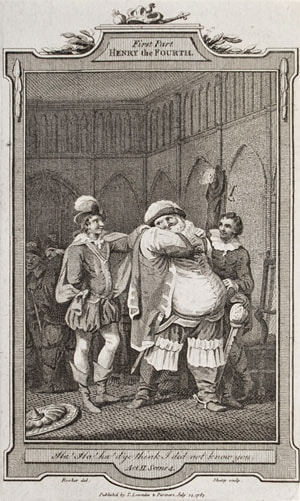
William Sharp (1749-1824)
Sharp was one of the most celebrated English line engravers of the Georgian era. The son of a gunmaker, he received his apprenticeship under Barak Longmate. According to Bryan’s Dictionary, Sharp showed ‘more of the artist and less of the mechanic than any other engraver of his time.’
The Dictionary also provides a lively portrait of Sharp’s character. ‘His plate from [Benjamin] West’s [Thaddeus] Kosciuszko relieved him from an unpleasant and, at that time, dangerous predicament. He was suspected of entertaining revolutionary principles, and was examined before the Privy Council. At one of these examinations, after being long annoyed by questions which he thought irrelevant, he deliberately pulled out of his pocket a subscription list for the portrait, handed it to Pitt and Dundas, requesting them to have the goodness to put their names to it as subscribers, and then to pass it to other members of the council. The audacity of the proposal, at such a time, set them laughing and he was soon liberated. Sharp was by no means qualified to be a conspirator; he was fond of good cheer, and he had a weakness for all sorts of mysticism.’
In the course of his career, he was elected an honorary member of the Imperial Academy of Vienna and of the Royal Academy of Munich.
Collections
British Museum, London
Metropolitan Museum, New York
National Galleries of Scotland
National Portrait Gallery, London
Royal Academy, London
Royal Collection Trust
Victoria and Albert Museum, London
Literature
Hind, A M (1963 reprint), A History of Engraving and Etching, Dover Publications
Mackenzie, I (1988), British Prints, Antique Collectors’ Club
Redgrave, S (1970 reprint), A Dictionary of Artists of the English School, Kingsmead Reprints
Williamson, G C Ed. (1904), Bryan’s Dictionary of Painters and Engravers, George Bell and Sons
Sharp was one of the most celebrated English line engravers of the Georgian era. The son of a gunmaker, he received his apprenticeship under Barak Longmate. According to Bryan’s Dictionary, Sharp showed ‘more of the artist and less of the mechanic than any other engraver of his time.’
The Dictionary also provides a lively portrait of Sharp’s character. ‘His plate from [Benjamin] West’s [Thaddeus] Kosciuszko relieved him from an unpleasant and, at that time, dangerous predicament. He was suspected of entertaining revolutionary principles, and was examined before the Privy Council. At one of these examinations, after being long annoyed by questions which he thought irrelevant, he deliberately pulled out of his pocket a subscription list for the portrait, handed it to Pitt and Dundas, requesting them to have the goodness to put their names to it as subscribers, and then to pass it to other members of the council. The audacity of the proposal, at such a time, set them laughing and he was soon liberated. Sharp was by no means qualified to be a conspirator; he was fond of good cheer, and he had a weakness for all sorts of mysticism.’
In the course of his career, he was elected an honorary member of the Imperial Academy of Vienna and of the Royal Academy of Munich.
Collections
British Museum, London
Metropolitan Museum, New York
National Galleries of Scotland
National Portrait Gallery, London
Royal Academy, London
Royal Collection Trust
Victoria and Albert Museum, London
Literature
Hind, A M (1963 reprint), A History of Engraving and Etching, Dover Publications
Mackenzie, I (1988), British Prints, Antique Collectors’ Club
Redgrave, S (1970 reprint), A Dictionary of Artists of the English School, Kingsmead Reprints
Williamson, G C Ed. (1904), Bryan’s Dictionary of Painters and Engravers, George Bell and Sons
Our full selection of antique prints can be viewed here.